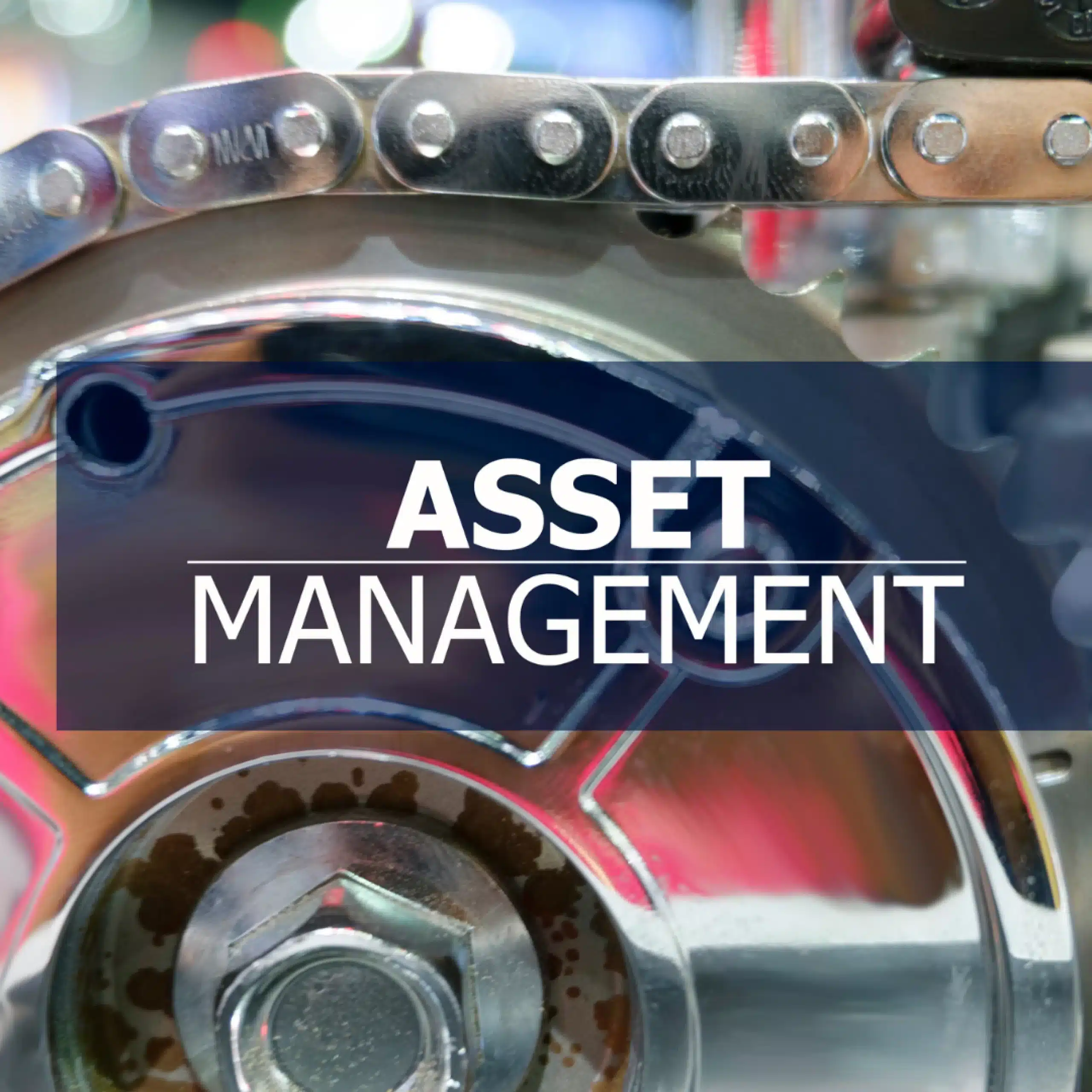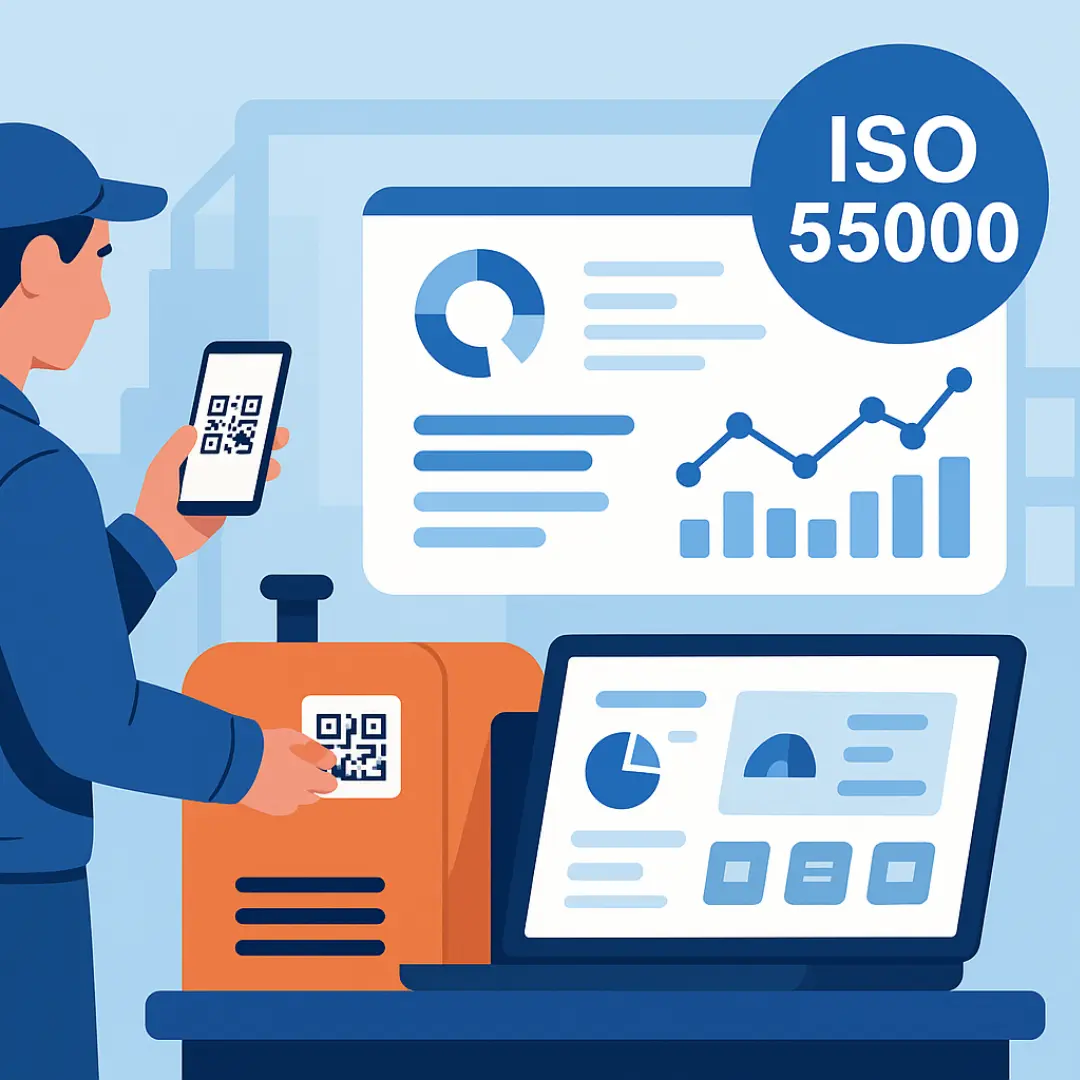A facility’s assets are vital to the company’s success. When assets are well-maintained and functioning properly, the entire organization thrives.
However, while assets are crucial, it’s the people within the organization who drive their performance. Every individual plays a role in influencing equipment outcomes, from executives who invest in assets, to engineers who design them, managers who strategize, technicians who maintain, and operators who use them.
Given the close relationship between decision-making and asset efficiency, it’s essential to have clear guidelines that align these efforts. This is where an asset management policy becomes key.
What İs Asset Managament ?
Asset management is the systematic process of developing, operating, maintaining, upgrading, and disposing of assets in a cost-effective way. The goal is to maximize the value and performance of assets throughout their lifecycle while minimizing risks and costs.
In a business context, assets can include physical items like machinery, buildings, and vehicles, as well as intangible items like software, patents, and intellectual property. Effective asset management ensures that these assets are used efficiently, maintained properly, and replaced or disposed of when necessary.
Key components of asset management include:
- Asset Inventory: Keeping a detailed record of all assets, including their condition, location, and value.
- Maintenance Planning: Scheduling regular maintenance to prevent breakdowns and extend the life of assets.
- Lifecycle Management: Monitoring assets from acquisition to disposal, ensuring they are used to their full potential and replaced at the right time.
- Risk Management: Identifying and mitigating risks associated with asset failure or underperformance.
- Cost Optimization: Balancing the costs of acquiring, maintaining, and disposing of assets with the benefits they provide.
- Compliance: Ensuring assets are managed in accordance with regulatory and industry standards.
By effectively managing assets, organizations can improve productivity, reduce costs, and enhance overall operational efficiency.

Benefits Of Asset Management
Effective asset management offers numerous benefits to organizations across various industries. Here are some of the key advantages:
- Improved Asset Utilization:
- Asset management helps ensure that assets are used to their full potential, minimizing downtime and maximizing productivity. This leads to better resource allocation and increased efficiency.
- Cost Reduction:
- By optimizing maintenance schedules, reducing unnecessary repairs, and extending the lifespan of assets, organizations can significantly reduce costs associated with asset ownership and operation.
- Enhanced Decision-Making:
- With accurate data on asset performance and condition, decision-makers can make informed choices about when to invest in new assets, retire old ones, or optimize current operations.
- Risk Management:
- Proper asset management includes identifying potential risks, such as equipment failures or regulatory non-compliance, and implementing strategies to mitigate these risks, reducing the likelihood of costly disruptions.
- Compliance and Safety:
- Asset management helps ensure that assets are maintained in compliance with industry regulations and safety standards, protecting the organization from legal issues and ensuring a safe working environment.
- Increased Return on Investment (ROI):
- By maximizing the performance and lifespan of assets, organizations can achieve a higher return on their investment, improving overall financial performance.
- Sustainability and Environmental Impact:
- Effective asset management promotes the efficient use of resources, reducing waste and energy consumption. This contributes to sustainability efforts and can enhance the organization’s reputation.
- Enhanced Reliability and Performance:
- Regular maintenance and monitoring ensure that assets perform reliably, reducing the likelihood of unexpected failures and improving overall operational performance.
- Better Forecasting and Planning:
- Asset management provides historical data and insights that help in forecasting future needs, budgeting for maintenance, and planning for asset replacements or upgrades.
- Improved Customer Satisfaction:
- Well-maintained assets contribute to consistent product or service quality, which can lead to higher customer satisfaction and loyalty.
Overall, asset management helps organizations achieve greater efficiency, reduce costs, and improve the reliability and performance of their assets, leading to a stronger competitive position in the market.
What İs An Asset Management Policy?
An asset management policy is a formal document that outlines the principles, guidelines, and objectives for managing an organization’s assets. It serves as a strategic framework to ensure that assets are effectively managed throughout their lifecycle, aligning asset management practices with the organization’s overall goals and objectives.
Key Components of an Asset Management Policy:
- Purpose and Scope:
- The policy begins by defining its purpose and the scope of assets it covers. This may include physical assets like machinery, buildings, and infrastructure, as well as intangible assets like software and intellectual property.
- Objectives:
- The policy outlines the specific goals of asset management, such as maximizing asset performance, minimizing costs, ensuring compliance with regulations, and supporting organizational sustainability.
- Guiding Principles:
- This section includes the core principles that will guide asset management practices. These might include efficiency, sustainability, risk management, continuous improvement, and alignment with business strategy.
- Roles and Responsibilities:
- The policy assigns responsibilities to different stakeholders within the organization, from executives and managers to technicians and operators. It clarifies who is responsible for decision-making, implementation, and oversight of asset management practices.
- Lifecycle Management:
- The policy addresses the entire lifecycle of assets, from acquisition and operation to maintenance and eventual disposal or replacement. It outlines the processes for each stage to ensure assets are managed cost-effectively and sustainably.
- Risk Management:
- The policy includes strategies for identifying, assessing, and mitigating risks associated with asset ownership and operation. This helps to prevent unexpected failures and ensures the organization can respond effectively to any issues that arise.
- Compliance and Standards:
- The policy ensures that all asset management practices comply with relevant laws, regulations, and industry standards. It may also reference internal standards and best practices that must be followed.
- Performance Measurement:
- The policy sets out how the performance of assets will be measured and monitored. This could include key performance indicators (KPIs) related to uptime, cost efficiency, asset utilization, and maintenance effectiveness.
- Continuous Improvement:
- The policy encourages ongoing evaluation and improvement of asset management practices. This might involve regular reviews, audits, and updates to the policy itself, as well as training and development for staff.
- Communication and Reporting:
- The policy outlines how information about asset management activities and performance will be communicated within the organization, ensuring transparency and accountability.
Importance of an Asset Management Policy:
- Alignment with Business Goals: It ensures that asset management activities are aligned with the organization’s broader strategic objectives.
- Consistency and Standardization: The policy promotes consistent and standardized practices across the organization, reducing variability and improving overall efficiency.
- Risk Mitigation: By clearly defining processes and responsibilities, the policy helps to mitigate risks associated with asset failure or mismanagement.
- Improved Decision-Making: The policy provides a clear framework for decision-making, helping managers and executives make informed choices about asset investments, maintenance, and disposal.
- Regulatory Compliance: It ensures that asset management practices comply with all relevant regulations and industry standards, avoiding legal and financial penalties.
What is The ISO 55001 Standard?
ISO 55001 is an international standard for asset management systems, developed by the International Organization for Standardization (ISO). It provides a framework for establishing, implementing, maintaining, and improving an organization’s asset management system. The standard is designed to help organizations manage the lifecycle of their assets more effectively, ensuring that they deliver maximum value, support organizational objectives, and minimize risks.
Key Elements of ISO 55001:
- Asset Management Policy:
- The standard requires the organization to develop a formal asset management policy that aligns with its overall strategic objectives. This policy should guide the management of assets throughout their lifecycle.
- Leadership and Commitment:
- Top management must demonstrate leadership and commitment to the asset management system. This includes ensuring that the necessary resources are available and that the asset management objectives are integrated into the organization’s broader strategy.
- Planning:
- ISO 55001 emphasizes the importance of planning in asset management. This includes setting objectives, identifying risks and opportunities, and developing a strategy for achieving those objectives in line with the asset management policy.
- Support:
- The standard requires organizations to provide the necessary support for the asset management system. This includes ensuring that staff are competent, resources are available, and that there is effective communication and documentation.
- Operation:
- Organizations must establish processes and controls to ensure that asset management activities are carried out effectively. This includes managing risks, implementing plans, and monitoring performance.
- Performance Evaluation:
- ISO 55001 requires organizations to regularly monitor, measure, analyze, and evaluate the performance of their asset management system. This helps ensure that objectives are being met and that the system is continuously improving.
- Improvement:
- The standard promotes a culture of continuous improvement. Organizations are required to identify opportunities for improvement, address nonconformities, and take corrective actions to enhance the asset management system.
Benefits of ISO 55001 Certification:
- Improved Asset Performance:
- By following the ISO 55001 framework, organizations can optimize the performance of their assets, leading to increased efficiency, reduced downtime, and extended asset life.
- Cost Efficiency:
- The standard helps organizations manage assets in a way that minimizes costs while maximizing value. This includes reducing unnecessary maintenance, avoiding asset failures, and optimizing asset utilization.
- Risk Management:
- ISO 55001 provides a structured approach to identifying and managing risks associated with asset ownership and operation, helping to prevent costly disruptions.
- Regulatory Compliance:
- The standard helps organizations ensure compliance with relevant regulations and industry standards, reducing the risk of legal penalties and improving overall governance.
- Strategic Alignment:
- The standard ensures that asset management activities are aligned with the organization’s overall strategic objectives, helping to support long-term business goals.
- Enhanced Decision-Making:
- ISO 55001 provides a framework for making informed decisions about assets, based on data and performance metrics. This leads to better investment decisions and more effective asset management.
- International Recognition:
- Certification to ISO 55001 demonstrates to stakeholders, including customers, investors, and regulators, that the organization is committed to best practices in asset management.
Applicability:
ISO 55001 is applicable to organizations of all types and sizes, including public and private sector entities, across various industries. It is particularly valuable for organizations with significant investments in physical assets, such as manufacturing companies, utilities, transportation providers, and infrastructure operators.
In summary, ISO 55001 provides a comprehensive framework for asset management that helps organizations optimize the value of their assets, manage risks, and align asset management practices with their strategic goals.

How To Develop An Asset Management Policy And Strategy ?
Developing an asset management policy and strategy is a structured process that involves defining your organization’s goals, understanding your assets, and creating a framework to manage them effectively. Here’s a step-by-step guide to developing an asset management policy and strategy:
1. Understand Organizational Objectives
- Align with Strategic Goals: Begin by understanding your organization’s broader strategic objectives. The asset management policy and strategy should support these goals, whether they relate to growth, sustainability, efficiency, or risk management.
- Stakeholder Engagement: Engage key stakeholders, including executives, managers, and technical staff, to ensure that the asset management policy and strategy align with their expectations and needs.
2. Define the Scope
- Identify Assets: Determine which assets will be covered by the policy and strategy. This could include physical assets (e.g., machinery, buildings) as well as intangible assets (e.g., software, patents).
- Asset Lifecycle Consideration: Consider the entire lifecycle of the assets, from acquisition and operation to maintenance, renewal, and disposal.
3. Develop the Asset Management Policy
- Purpose and Objectives: Clearly state the purpose of the asset management policy and the specific objectives it aims to achieve, such as maximizing asset performance, minimizing costs, ensuring compliance, or supporting sustainability.
- Guiding Principles: Outline the core principles that will guide asset management practices. These could include efficiency, risk management, sustainability, and continuous improvement.
- Roles and Responsibilities: Define the roles and responsibilities of various stakeholders in the organization, including senior management, asset managers, and operational staff.
- Compliance and Standards: Specify the relevant laws, regulations, and industry standards that the policy must adhere to. Also, include any internal standards or best practices.
- Communication and Review: Establish how the policy will be communicated to all relevant parties and how it will be reviewed and updated over time.
4. Conduct an Asset Assessment
- Asset Inventory: Create a detailed inventory of all assets, including their condition, location, and value. This inventory will serve as the foundation for your strategy.
- Condition and Performance Evaluation: Assess the current condition and performance of each asset. This evaluation helps in understanding where improvements are needed and which assets require more attention.
5. Develop the Asset Management Strategy
- Set Clear Objectives: Define clear, measurable objectives for asset management that align with the broader organizational goals. These could include improving asset uptime, reducing maintenance costs, or extending asset lifespan.
- Risk Management: Identify potential risks associated with asset management, such as equipment failures, regulatory non-compliance, or budget constraints. Develop strategies to mitigate these risks.
- Lifecycle Management: Plan for the entire lifecycle of assets, including acquisition, maintenance, upgrades, and disposal. Ensure that each stage is managed to optimize asset performance and value.
- Resource Allocation: Determine the resources (financial, human, and technological) required to achieve the asset management objectives. This includes budgeting for maintenance, training, and technology investments.
- Maintenance Strategy: Develop a maintenance strategy that includes preventive, predictive, and reactive maintenance activities. Schedule regular inspections and maintenance tasks to prevent unexpected failures.
- Performance Monitoring: Establish key performance indicators (KPIs) to monitor the effectiveness of the asset management strategy. Regularly review these metrics to ensure that the strategy is delivering the desired outcomes.
- Continuous Improvement: Include a plan for continuous improvement, allowing for regular reviews of asset management practices and adaptation to new challenges or opportunities.
6. Implement the Policy and Strategy
- Communication: Communicate the policy and strategy clearly to all relevant stakeholders. Ensure that everyone understands their roles and responsibilities.
- Training: Provide training for staff involved in asset management to ensure they have the necessary skills and knowledge to implement the strategy effectively.
- Technology Integration: Implement asset management software or tools that can support the strategy, such as a computerized maintenance management system (CMMS).
- Pilot Testing: Consider running a pilot program to test the strategy on a smaller scale before full implementation. This allows for adjustments based on real-world feedback.
7. Monitor and Review
- Regular Audits: Conduct regular audits of the asset management system to ensure compliance with the policy and identify areas for improvement.
- Performance Evaluation: Continuously monitor the performance of assets against the established KPIs. Use this data to refine the strategy and make informed decisions.
- Feedback Loop: Establish a feedback loop where lessons learned from implementation are used to improve the asset management policy and strategy.
8. Continuous Improvement
- Update Policy and Strategy: Periodically review and update the asset management policy and strategy to reflect changes in organizational objectives, technology, regulations, and industry best practices.
- Engage Stakeholders: Regularly engage stakeholders to gather input and ensure that the asset management approach remains aligned with their needs and expectations.
By following these steps, organizations can develop a robust asset management policy and strategy that optimizes asset performance, supports organizational goals, and ensures long-term sustainability.
Have you received sufficient information about “Guidance for Asset Management Policy“?
repairist is here to help you. We answer your questions about the Maintenance Management System and provide information about the main features and benefits of the software. We help you accessthe repairist demo and even get a free trial.
Aybit Technology Inc.
Frequently Asked Questions
An asset management policy is a set of general principles and rules that determine how an organisation manages its assets. It is developed to optimise the performance of assets, minimise costs, ensure compliance and support sustainability.
This policy enables the organisation to manage assets effectively. It also supports the efficient use of resources, management of risks, ensuring regulatory compliance and long-term value creation.
Purpose and objectives
Guiding principles
Roles and responsibilities
Compliance and standards
Communication and review methods












